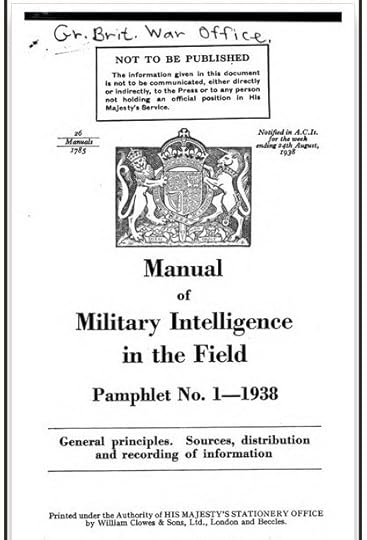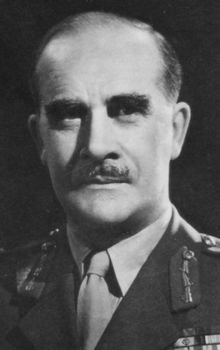How SOE Came Into Being
First and foremost… this is a simplified version of the various departments and organizations that were involved in the establishment of the Secret Operations Executive in July 1940.
I will bundle all these blog posts at the end and provide them with an extensive reading list for those of you who want to know the more complicated truth. 😁
British military Intelligence services had been greatly neglected between the two world wars, but with the uptick of Nazi aggression in Germany, the need to revitalize this type of warfare became apparent.
The Intelligence Corps, that had been created during the First World War, had been dissolved in 1929. Any knowledge gathered in that war was either lost or outdated, so when Hitler annexed Austria (the Anschluss) in March 1938, the British Foreign Office woke up to the stark realization it needed to up its Intelligence game.

Title page of the Manual of Military Intelligence
The 1922(!) edition of the Manual of Military Intelligence served for the renewed 1938 guide on how to recruit businessmen, lawyers, bankers, and other civilian professionals with language skills for Intelligence work in the event of hostilities. The link gives you the revamped 1938 edition.
It goes without saying that the Germans were much more advanced regarding counterespionage, infiltration, radio interception, etc. With devastating outcomes for the many British-trained secret agents dropped behind enemy lines during WW2.
But I'm getting ahead of myself here.
Already at the end of March 1938, the Secret Intelligence Service (SIS, also known as MI6) - which was under the control of the Foreign Office, formed a section called Section D. The "D" most likely standing for "Destruction". Section D was headed by Lieutenant-Colonel L.D. Grand. Its professional aim was to stir up resistance to the Germans in Europe by acts of sabotage. Interesting side note: on the Section D was a man by the name of Guy Burgess, who was already working for the Soviet Union as a spy.
The very existence of Section D was officially denied for decades after the war, but it was this Section that would eventually provide Special Operations Executive (SOE) with a nucleus of secret serviceman. They did, of course, not come from the mainstream SIS, which continued to be at loggerheads with SOE throughout the war.
On 10 May 1940, the day the 'phoney war' ended with the start of the Blitzkrieg offensive into Holland and Belgium was the same day Winston Churchill became Prime minister. On 16 July Churchill authorized the creation of SOE, a department that was to deal with subversion, sabotage, and irregular warfare, with Section D as one of its organizations. The Minister or Economic Warfare, Hugh Dalton, who was politically responsible for SOE, noted in the 16 July entry of his diary that Churchill had told him, "And now go and set Europe ablaze." Dalton adopted the methods of the Irish Republican Army (IRA) during the Irish War of Independence as a model for the organization.
More on the leadership of SOE - both the people politically responsible and the executive directors - in the next blog post. Here's the most colorful of them already: Brigadier-General Colin Gubbins, involved with SOE from the start but its executive director as of 1943.

General Colin Gubbins



